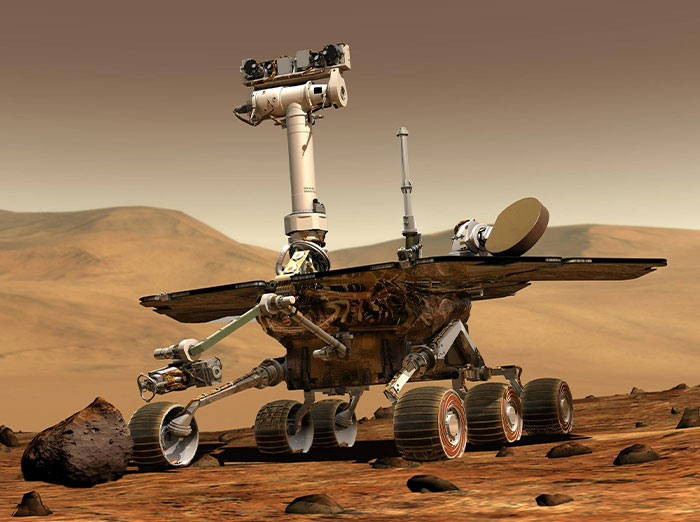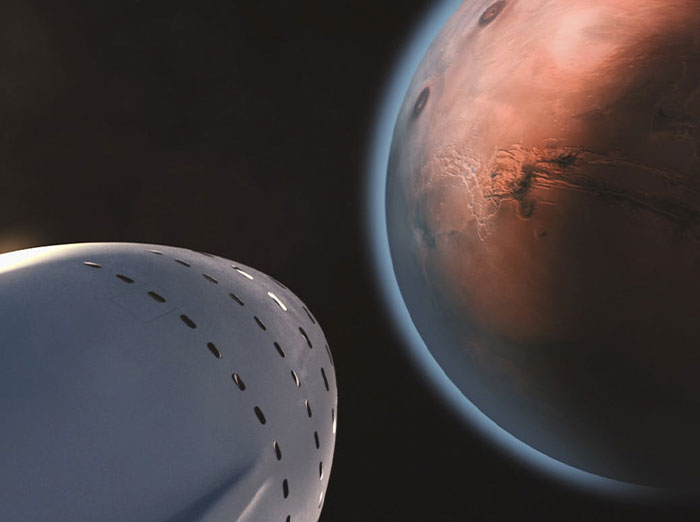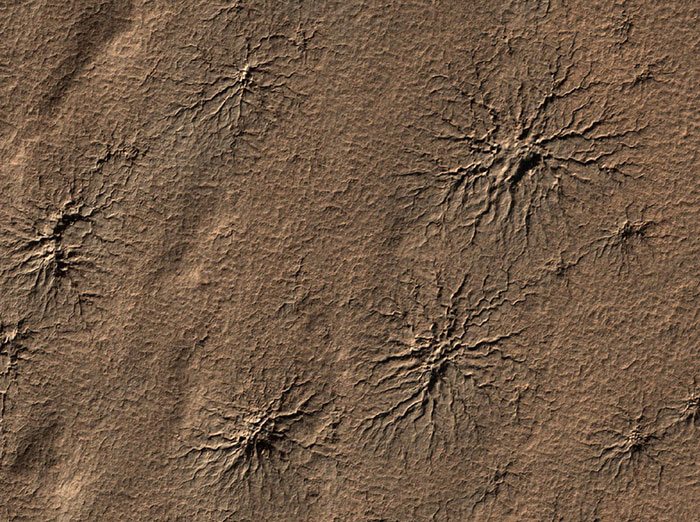NASA scientists have finally managed to recreate the uncanny black “spiders” that are found on the surface of Mars and were originally identified in 2003, thanks to images captured from orbiters.
The new “breakthrough” comes in the form of a study published on September 11 in The Planetary Science Journal and could be key to uncovering the history of Mars and understanding how life could have survived there.
During the published experiments, scientists replicated the process they thought was happening and managed to recreate these “spiders.”
The phenomenon known as “spiders on Mars” has been recreated on Earth for the first time, which could be vital in learning more about the planet

Image credits: Pixabay
These spiders are hundreds of dark, crack-like structures that have been visible on the Red Planet, each with countless individual lines.
Each branded formation of these spiders, called araneiform terrain, can stretch between 45 meters and 1 km wide, known as the spindly “legs.”
While many such spiders were observed, no one was quite sure how they were formed, though they hypothesized the process involved carbon dioxide ice — something that doesn’t naturally occur on Earth.
In the new study, scientists wanted to confirm their theory and mimic conditions similar to the temperatures and air pressure of Mars in a specialized laboratory chamber.
The experiment was based off a model created three years ago, which detailed a potential way these “spiders” were formed

Image credits: SpaceX
Lauren Mc Keown, the study’s lead author and planetary geomorphologist at NASA, has been working on this project for five years. She said the moment the little Martian critters birthed was almost too much to handle.
“It was late on a Friday evening and the lab manager burst in after hearing me shrieking,” she said in a statement. “She thought there had been an accident.”

Image credits: NASA Jet Propulsion Laboratory
In 2021, Mc Keown led a study that came up with a leading hypothesis as to how the spiders were formed. This was called the Kieffer Model, which suggested that these formations were related to the cooling and heating of the planet throughout the seasons.
During Martian spring, sunlight would shine through slabs of CO2 on the surface, which heated the ground. In turn, this caused the ice to sublimate into gas and create pressure buildup within the ice slabs.
The ice cracked once the pressure got too high and enabled the gas to escape. As the gas seeped out of the cracks, it brought a stream of dark dust and sand from the surface, leaving behind the spider-like formations when the ice melted during the summer.
Scientists are determined to understand more about the Red Planet, and this breakthrough is a step in the right direction

Image credits: NASA Jet Propulsion Laboratory
While researchers have yet to find hard evidence that life once existed on Mars, it is confirmed that the planet used to be warmer and wetter, and therefore, more habitable. And as life on Earth bloomed, our twin planet went through significant climate changes.
Geologists have studied rocks, sediments, and soil for clues on the history of the surface — specifically through volcanoes, craters from meteorite impacts, atmospheric or photochemical effects, and other geophysical processes.
Now that researchers have more insight on the temperatures and air pressure that are found on the surface, they may be able to reveal more of Mars’ mystifying history.
Netizens gave their own theories in the comments

Image credits: Kindel Media
One user on Facebook said it was “possibly the remains of ancient cities” while someone else added that it was “voltage potential.”
Someone else joked that they should have asked David Bowie, referencing his song “Life on Mars?”
Some users mentioned other natural phenomenon that could have occurred









The post ‘Spiders On Mars’ Recreated On Earth For The First Time—Researchers Are Thrilled With Excitement first appeared on Bored Panda.
from Bored Panda https://ift.tt/dE5uUPq
via IFTTT source site : boredpanda